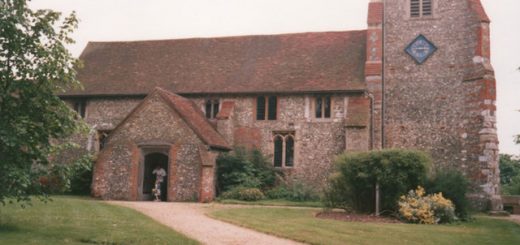Culloden Battlefield
The moor – site of the last battle on British soil -has its share of ghostly traditions, perhaps befitting for the scene of so much bloodshed and slaughter. The Battle of Culloden – April 16th 1746 – marked the fall of the Jacobite rebellion of 1745, which sought to restore the Stuart monarchy to the throne. In barely 40 minutes of fighting, the massed army of Bonnie Prince Charlie had been slaughtered by government troops (which also contained Scottish clans) led by Prince William the Duke of Cumberland.
 The odds were already stacked against them, the boggy, rain sodden ground of the moor was not suited to the Highland charge, they were vastly outnumbered, and they were exhausted after a many days marching back from England where they had failed to muster the support they badly needed to ensure victory. They had also launched a surprise attack on their foes during the night which had ended without them even coming into contact with the Duke’s men.
The odds were already stacked against them, the boggy, rain sodden ground of the moor was not suited to the Highland charge, they were vastly outnumbered, and they were exhausted after a many days marching back from England where they had failed to muster the support they badly needed to ensure victory. They had also launched a surprise attack on their foes during the night which had ended without them even coming into contact with the Duke’s men.
The battle started with an exchange of artillery that quickly became a one sided affair, as the Jacobite gunners were vastly outnumbered and outclassed. Twenty minutes of constant bombardment decimated the Jacobite lines as they awaited the order to charge. Bonnie Prince Charlie took no part in the battle, and with no leader to sound orders their hesitations was to play a large part in their defeat. When they finally did charge – taking it under their own initiative – the slaughter continued, those who did not die in a volley of bullets and grapeshot, were cut down when they reached the lines. The government troops used a new way of meeting the Highland charge, each soldier stabbed at the man to the right of those they faced directly, so their bayonet would pierce under the man’s raised sword arm, and avoid the targe, the highlander’s small shields most often held in the left hand.
There was no mercy for the wounded soldiers, many were slaughtered where they had fallen, and those who had managed to flee were hunted down and executed. Bonnie Prince Charlie managed to evade the Government forces, and after five months on the run throughout the Highlands, escaped to Italy via the Isle of Skye, never to return.
Ghostly Traditions
There is a tradition of haunted battle sites in Britain and Culloden is no exception, ghostly soldiers are supposed to appear on the anniversary of the battle on the 16th of April, and the cries of battle and the clash of steel have also been reported.
The spectre of one of the Highlanders is also said to frequent the area, he is tall in stature with drawn features – he is supposed to say, “defeated” in hushed tones when encountered. One woman visiting the moor from Edinburgh in August 1936 lifted a tartan cloth covering one of the mounds – which mark the Jacobite graves – to discover an apparition of a dead Highlander underneath it. Another tradition attached to these grave mounds is that birds do not sing in their vicinity, perhaps hushed by the ominous atmosphere.
There are numerous wells dotted around the area, on the battle site itself and nearby. St Mary’s Well is said to be haunted by the ghosts of the dead highlanders, and a Clootie Well in Culloden wood is festooned with brightly coloured rags, offerings from people wishing to be cured of ailments.
Directions: The car park for the visitors centre is off the B9006 from Inverness or Croy.
The above image depicts the Jacobite Army at Culloden and was kindly provided by the Fire & Sword Re-enactment Group, some of whom are in the photograph.



I found a reference to an
I found a reference to an incident at Culloden on August 5, 1748. It stated that some locals saw three globes of light in the sky over Culloden. They globes increased in brilliance and twelve tall men wearing bright clean attire soon appeared crossing the valley. John Prebble’s , ‘Culloden’ was cited as the source of the information.
Re: Culloden Battlefield
The Anniversary today.
Re: Culloden Battlefield
It looks like there are plans for a development at Culloden.
http://stopcullodendevelopment.weebly.com/